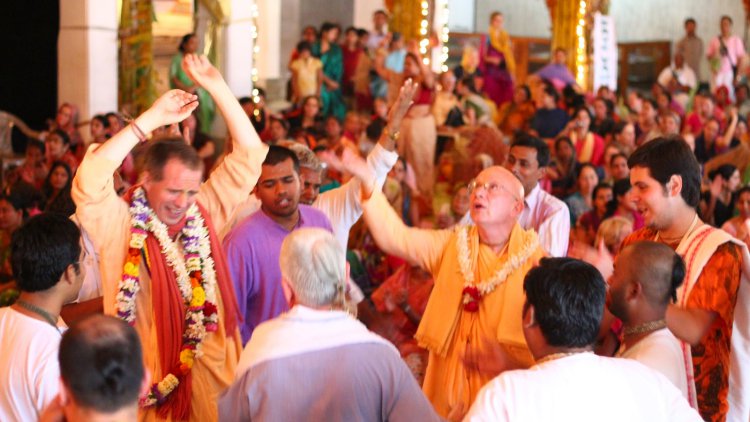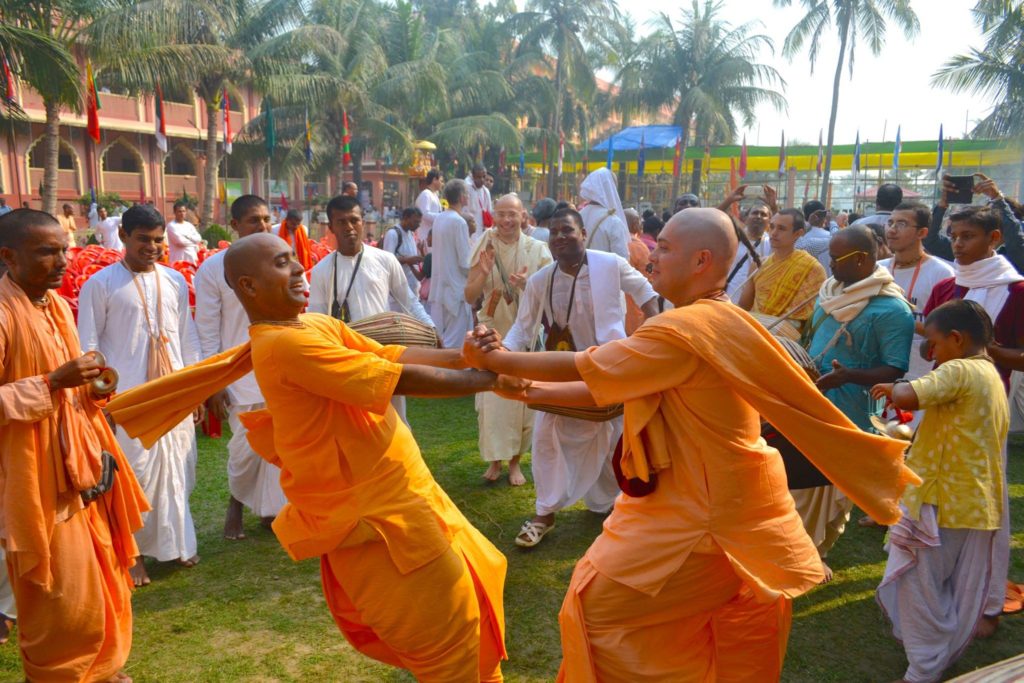In the Bhagavad-Gita, Krsna discusses many different subjects. He starts with sankhya-yoga, the empirical knowledge that “I’m not this body”, the difference between spirit and matter. He also explains about Himself, God, and how we can get closer to Him while executing our prescribed duties. That’s karma-yoga.
Karma-yoga means to remain in our material occupations and fulfill our duties, but to offer the fruits of our activities to Krsna, dovetailing our activities with Krsna Consciousness. For example, we have to eat. We hear that we should eat only prasadam, and strictly speaking, prasadam is when you cook for the deity, for the pleasure of the Lord, with elevated standards. At the same time, we can’t eat only in the temple, we also need to eat at home. So, what should we do? If one still doesn’t have this mentality of cooking solely for the pleasure of the Lord, then he can cook what he wants to cook, following the proper standards, but before eating, offer to the Lord. In other words, even if one is not yet on a pure platform, at least he can offer the fruits to the Lord, following the guidance of superior authorities. That’s one example of karma-yoga: It may not be pure devotion yet, but it’s a good start.
Karma-yoga is already done without expectation: one just offers the fruits to the Lord, without expecting any material recompense in return. In contrast with demigod worship, which is normally conducted as a kind of business, in karma-yoga we are already on the level of just wanting to please Krsna. That’s why Srila Prabhupada doesn’t make much distinction between karma-yoga and bhakti-yoga in his purports, translating both as “devotional service”. In one sense there is no difference: they are just different steps in the same stairway.
Continue reading →
71








